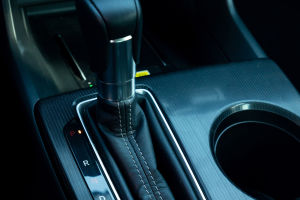In a significant achievement, Afghanistan recently introduced its first-ever domestically designed and built supercar, the Mada9.
The sleek and stylish prototype is the culmination of five years of dedicated development and design efforts led by a team of 30 engineers from ENTOP, in collaboration with Afghanistan's National Institute of Vocational Technology.
Powered by a modified Toyota engine, the Mada9 promises to deliver an exhilarating driving experience. However, its performance capabilities on the road have yet to be fully assessed, as the automaker ENTOP has not released any official performance data.
While several videos showcasing the car have surfaced on social media platforms, most of them depict the vehicle in a stationary state.
Taliban spokesman Zabihullah Mujahid took to social media to express his pride in the country's achievement, posting pictures and videos of the Mada9. He declared its creation as a moment of great honor for Afghanistan, and extended gratitude to the Ministry of Vocational Education for their support, acknowledging their invaluable contribution in achieving this significant milestone.
One particularly captivating video captures the Mada9 gracefully gliding down a snow-covered road, emitting a pleasing rumble from its exhaust, much to the delight of onlookers.
This suggests that the Mada9 possesses advancements beyond those typically seen in prototypes, instilling optimism for its future prospects.
According to a report by Afghan media outlet TOLO News, the head of Afghanistan's National Institute of Vocational Technology mentioned that the Toyota Corolla engine used in the Mada9 had undergone modifications. He further emphasized that the engine possesses sufficient power to handle increased speeds, instilling confidence in its performance capabilities.
Mohamed Riza Ahmadi, the designer behind the Mada9, revealed that it took him and his team of 30 engineers five years to transform the initial idea into a tangible reality. Ahmadi's dedication and perseverance in bringing this project to fruition are commendable, highlighting the resilience and determination of Afghan innovators.
Some sources indicate that the Mada9 is equipped with a 1.8-liter 1ZZ engine, previously utilized in a series of economy cars produced by the company in the late 1990s and early 2000s. However, it is worth noting that the performance of the 1ZZ engine was relatively modest, with a maximum output of only 130 horsepower.
By comparison, British car manufacturer Lotus implemented a supercharger in their upgraded version of the engine, providing the lightweight Elise sports car with 218 horsepower, enabling it to accelerate from 0 to 100 km/h in just over 4 seconds.
The introduction of the Mada9 has been widely celebrated in Afghanistan, with Afghan citizens sharing photos of the car as a testament to the country's technological capabilities. However, critics have raised concerns about the lack of opportunities for women to study and work in Afghanistan.
The timing of the supercar's launch has prompted international accusations against Afghanistan regarding the denial of rights to women.
While the Mada9 showcases Afghanistan's advancements in automotive technology, it is important to address the broader societal issues and work towards inclusive progress.
The success of the Mada9 should inspire the nation to strive for equal opportunities and empower all citizens, regardless of gender, to contribute to the country's scientific and technological advancements.


